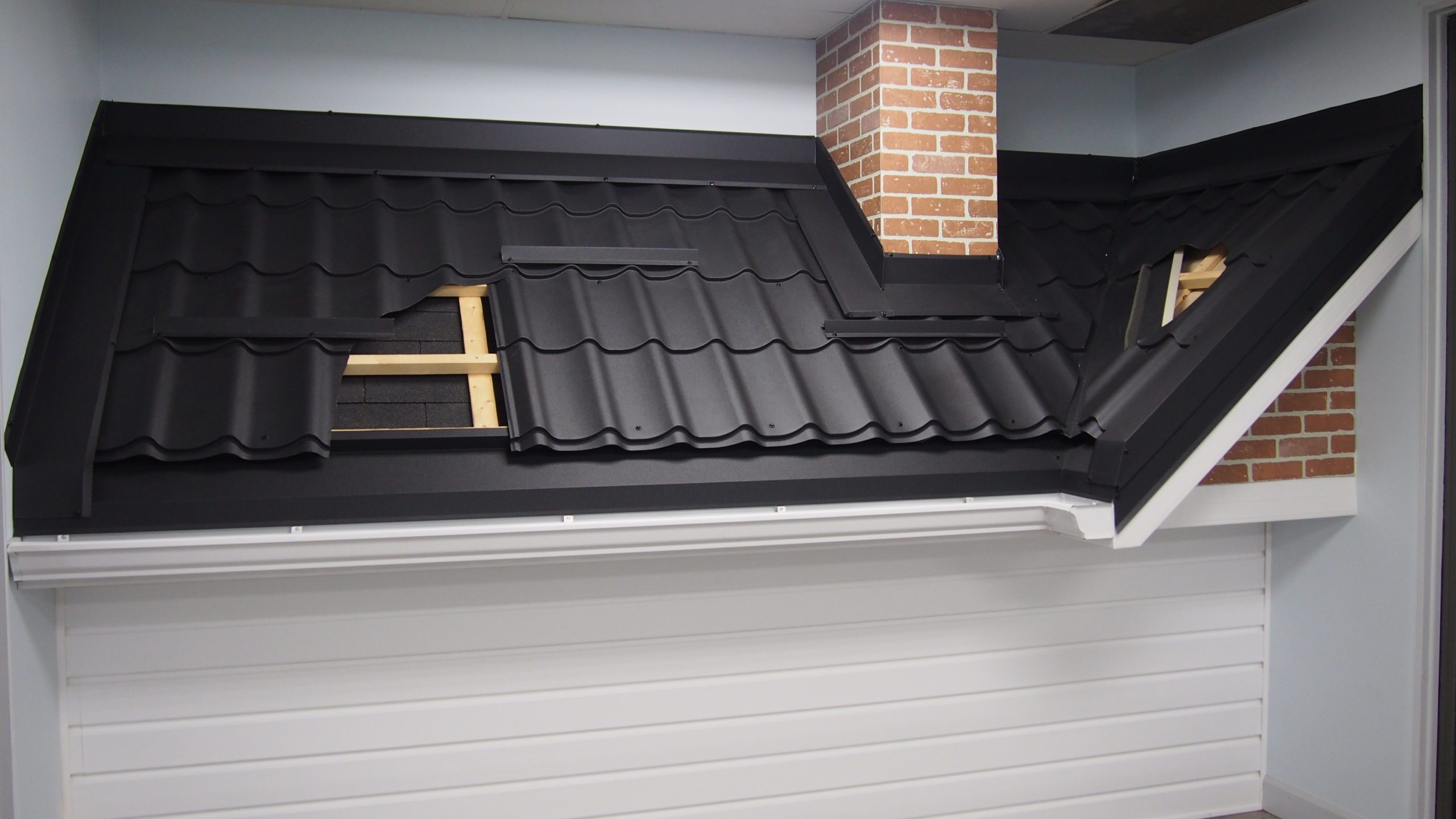
Traditionally, metal roofing was associated with barns and industrial facilities. Today, advanced technology has revolutionized metal to a quality, elegant, modern and durable roofing material with bright shining colors.
Metal has become the most functional and popular roofing material because it is durable, stylish and versatile. It is available in dozens of materials, styles, colors, and designs. Metal roofing can imitate other roofing materials giving you the appearance of conventional materials, but with the strength of metal.
If you want a durable, fire-resistant, lightweight, and beautiful roof, choose metal. At Top Metal Roofs, we will guide you in choosing a suitable metal roofing material and help you make an informed decision. This article will inform you about the different types of metal roofing materials available.
Steel
Most metal roofing is made from stainless steel or steel alloys because steel is affordable. It is stronger and can withstand more pressure than aluminum. It is available in two gauges, G-60 and G-90, which determine its durability and performance. The thinner G-90 gauge is less expensive and often used for low-end ribbed and corrugated metal roofing panels.
Steel is strong, resistant to rust and it does not dent from hail or impact. However, it must be coated to protect it from corrosion. It is available in a wide range of color options.
Steel is not suitable for big commercial buildings or residential houses that need stronger protection from the elements and proper insulation.
There are several types of steel available:
Galvanized steel:
It is made of steel with a zinc coating. The blend improves the appearance of the roof, increases the roof’s resistance to corrosion and increases the lifespan of the roof. Galvanized steel is also covered with a durable top coating for longevity.
Galvalume steel:
It is a combination of aluminum and zinc. It is strong, durable and two-four times more resistant to corrosion than galvanized steel. Galvalume steel is professionally painted at the factory for more protection and to provide a wide variety of colors. However, it is more expensive than galvanized steel and cannot withstand coastal climates because it corrodes from salt air. It is also not suitable for farms with widespread manure because it reacts with ammonia gas from the manure and breaks down.
Stone coated steel:
These are steel panels, coated with zinc or aluminum, and layered with ceramic-coated stone granules. The alloy is strong, extremely elegant, and it is available in different designs and colors. The stone coating mimics tile roofing while a baked-on acrylic coating adds protection and color. Stone coated steel is ideal for recreating a historical architectural design.
Weathering steel:
This type of steel was originally created for heavy steel industrial construction. It is made of an outer layer of steel which is purposely designed to rust, and protect the inner layer. It is not intended for application as a construction solution for steel roofing. However, it can be used in accent roofs but it requires regular maintenance due to the rusting process.
Aluminum
Aluminum is more costly compared to steel, but it has more advantages which make it a great choice for residential roofing. It is durable, lightweight, 100% recyclable, resistant to corrosion, energy efficient, and malleable. Because it is malleable, aluminum can be stylishly designed to resemble wooden, stone or traditional clay shingles. It can be coated or painted to achieve a specific appearance. Aluminum can be used in coastal climates because it does not corrode.
Although aluminum is fully recyclable, it is not very popular among environmentalists due to the massive amounts of energy used during its production. In addition, it can be dented or damaged easily.
Copper
Copper has been in use for hundreds of years and it is the most expensive metal roofing material. It is stylish, does not rust, does not peel or scratch and it is soft enough to work on. It is fire resistant, very effective in shedding snow and it is easily recyclable. Copper can last for more than a century with minimum maintenance and most likely outlive the house itself. It interacts with oxygen and undergoes a natural weathering process which produces an attractive verdigris patina.
Because of its prohibitive cost, copper is rarely used for roofing entire houses. Instead, it is often used to cover some sections of the roof such as a bay window or cupola. In addition, some people find patina unappealing.
Zinc
Zinc is often used in roofing because it is resistant to corrosion, it is malleable and has a stylish appearance. However, it is mainly applied as an element in different alloys. Zinc is extremely durable and untreated zinc can be used in both inland and coastal roofing. Zinc can be used on intricate roof designs because it is malleable. It is 100% recyclable and very little energy is required for its production.
If zinc is not painted, it patinas over time to an unappealing green/blue look. Water runoff from the roof leaves a chalky residue which is not appealing. Zinc damages easily from wind and hailstones because it is soft. In addition, it is expensive and requires specialized installers.
Iron
Iron is affordable and still being used in industrial buildings. Iron roofing is classified into two types:
Inverted box rib:
This type of iron roofing comes in cheap, low-quality corrugated squares. It is generally used for storage structures that are small and do not require special insulation.
Corrugated galvanized iron:
These are iron panels coated with steel to increase durability. They are durable, cheap and suitable for roofing sheds and barns. However, corrugated galvanized iron rusts especially if it is exposed to acidic rain.
Tin
Tin has been used for years in roofing industrial buildings. It is easy to install, affordable and fitting for storage purposes. It is not appropriate for residential roofing because it is prone to high noise levels, dents, corrosion, and rust.
Metal Roofing Styles
It is impossible to think about metal roofing materials without including metal roofing styles. As you plan to install a metal roof, it is important to decide in advance how you want your finished roof to appear. Your metal roof can be in the form of sheet-like panels or shingles. Each form has a different look and different characteristics. In addition, each has a wide variety of color and patterns. You can choose the style that best suits your roofing needs.
Metal panels
The most common types of metal panel roofing are standing-seam, corrugated metal panels, and batten roofing. They are made with raised ribs running vertically along the panels at 6, 9 or 12-inch intervals. They are installed vertically and do not imitate the appearance of other roofing materials. Because the panels are large, they are faster to install compared to shingle and are best suited for large, continuous spaces.
Metal panel roofing has a definite commercial look and it is popular among architects for its contemporary, honest and clean appearance. It is used for almost all types of residential roofing from sophisticated modern homes to mountain cabins. However, metal panels do not fit in when used on a home with colonial architecture.
Each metal panel roofing style has its specific characteristics:
- Standing seam roofing panels have raised, self-sealing, ribs along their edges. The ribs interlock and form a tight seal that effectively locks out and sheds water. Locking systems vary in ease of use, appearance, suitability for use on specially designed roofs and their capability in sealing out water.
- Corrugated metal panels are available in sheets similar to standing seam. However, their performance is very poor because of how the panels connect. The panels are usually overlapped and screwed onto the structure. They may work for porches, barns or sheds but are not ideal for roofing houses because they do not shed rain well.
- Batten roofing panels are wider and have matching parts for connections, edges, hips, and ridges. Metal panels are installed between an uplifted batten strip, then a cap is used to cover the seam
Metal shingles and tiles
Metal shingles and tiles have a variety of looks that are different from panel roofing. They imitate wood shakes, slate, Victorian metal tiles, and Spanish and mission tile. They are made from coated or painted aluminum or steel that is formed into different shapes, then multiple layers of finish are added to complete the mimic effect.
Metal shingles are produced as panels that resemble shingles or tiles joined together. They are also available as single shingles. The panels are designed to cover irregular areas and for fast installation. The individual shingles are installed one at a time, are easier to work with and are more suitable for complex roof designs. You can place paneled shingles over an existing roof. However, individual shingles require a firm and flat roof deck, so you must remove the old roof before installing them.
Bottom Line
Now that you are well informed about the available metal roofing materials, you can choose the one that is most appropriate for your building. Before you choose, you need to consider factors like your desired final appearance, the style of your building and the cost of the material in relation to its lifespan. Top Metal Roofs’ consultants can help you make that decision. Contact us today at 647-470-7161 for an expert opinion.
